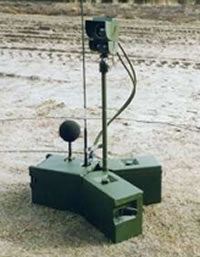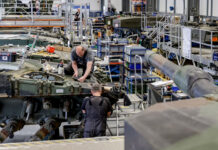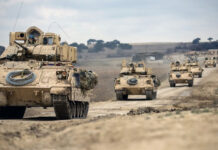After several decades of rather obscure awareness in military operations, the use of passive sensors for remote battlefield applications is becoming more popular. Driven by modern Digital Signal Processing (DSP), sensors are become smaller, yet much more accurate and sophisticated. These technological advances have made the development of advanced, multi-sensor Unattended Ground Sensors (UGS) possible. Existing in various sizes and forms, UGS contain several sensor technologies, deploWyed at the area of operation, detecting, classifying and reporting target information via wireless links to a remote control center. UGS systems use small, low cost and robust sensors expected to last in the field for weeks or even months. Other systems are providing communications, processing, as well as target verification and identification services.
 UGS systems utilize a combination of detectors, including seismic detectors (geophones), used to identify ground vibration caused by vehicles or pedestrians. Magnetic detectors monitor movement of metal objects such as weapons or vehicles. Acoustic sensors are used to detect targets by specific acoustic signatures (noise of engine, tracks etc) while passive infrared (PIR) sensors detect movements of objects in a narrow field of view. Input from all these detectors is collected by the gateway, processed by its on-board signal processors. When signatures are correlated into verified target detection, an alarm is triggered and transmitted automatically by radio to a central monitoring point in order to alert reaction forces on the suspect area.
UGS systems utilize a combination of detectors, including seismic detectors (geophones), used to identify ground vibration caused by vehicles or pedestrians. Magnetic detectors monitor movement of metal objects such as weapons or vehicles. Acoustic sensors are used to detect targets by specific acoustic signatures (noise of engine, tracks etc) while passive infrared (PIR) sensors detect movements of objects in a narrow field of view. Input from all these detectors is collected by the gateway, processed by its on-board signal processors. When signatures are correlated into verified target detection, an alarm is triggered and transmitted automatically by radio to a central monitoring point in order to alert reaction forces on the suspect area.
In certain situations, other sensors are required to verify an alarm triggered by non-imaging sensors. Such verification will most commonly utilize an imaging sensor. A typical configuration of such system is the Rheinmetall Defense BSA. A similar function can be provided by the Covert Unattended Ground Imager, (UGI-C). This man portable, persistent all-weather system is comprised of a thermal camera triggered by PIR, taking snapshots of nearby motion events. The captured images are compressed and sent as short 3.5 animation movies over non-line-of-sight RF communications link. Other systems currently available include Terrain Commander, which can be operated autonomously or by remote control.
Additional parts of this article:
















